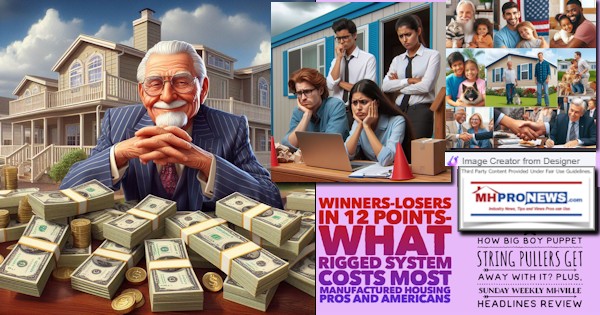
“I’m as mad as hell, and I’m not going to take this anymore!” The famous speech from the classic movie Network is posted further below along with that sadly still timely video clip. “I don’t have to tell you things are bad. Everybody knows things are bad,” said fictional anchor Howard Beale. That’s an arguably apropos item to pair with HUD’s 2024 Annual Homelessness Assessment Report (AHAR) to Congress. Beale said: “…we sit watching our TV’s while some local newscaster tells us that today we had fifteen homicides and sixty-three violent crimes, as if that’s the way it’s supposed to be. We know things are bad – worse than bad. They’re crazy.” In Part II there will be a focused analysis through the lens of inherently affordable mainstream manufactured housing of their document that includes what they missed. Part II will also include who aren’t counted by HUD in this report who may be homeless, but they are outside the bounds of HUD’s stated methodology. Meaning, homelessness in the U.S.A. is worse than HUD has said. But first up in Part I is HUD’s Key Findings.
Part I
Key Findings
The number of people experiencing homelessness on a single night in 2024 was the highest ever recorded. A total of 771,480 people – or about 23 of every 10,000 people in the United States – experienced homelessness in an emergency shelter, safe haven, transitional housing program, or in unsheltered locations across the country. Several factors likely contributed to this historically high number. Our worsening national affordable housing crisis, rising inflation, stagnating wages among middle- and lower-income households, and the persisting effects of systemic racism have stretched homelessness services systems to their limits. Additional public health crises, natural disasters that displaced people from their homes, rising numbers of people immigrating to the U.S., and the end to homelessness prevention programs put in place during the COVID-19 pandemic, including the end of the expanded child tax credit, have exacerbated this already stressed system.
Nearly all populations reached record levels. Homelessness among people in families with children, individuals, individuals with chronic patterns of homelessness, people staying in unsheltered locations, people staying in sheltered locations, and unaccompanied youth all reached the highest recorded numbers in 2024.
People in families with children had the largest single year increase in homelessness. Between 2023 and 2024, 39 percent more people in families with children experienced homelessness. Overall, the number of people experiencing homelessness increased by 18 percent.
Nearly 150,000 children experienced homelessness on a single night in 2024, reflecting a 33 percent increase (or 32,618 more children) over 2023. Between 2023 and 2024, children (under the age of 18) were the age group that experienced the largest increase in homelessness.
Veterans were the only population to report continued declines in homelessness. Between 2023 and 2024, the number of veterans experiencing homelessness declined by eight percent, or 2,692 fewer veterans. The number of veterans experiencing homelessness has declined by 55 percent since data collection about veteran homelessness began in 2009. The declines in sheltered and unsheltered experiences of homelessness were similar, (56% and 54%). These declines are the result of targeted and sustained funding to reduce veteran homelessness.
About one in every five people experiencing homelessness on a single night in 2024 was age 55 or older. More than 104,000 people experiencing homelessness were aged 55 to 64, and just over 42,150 people were over age 64. Nearly half of adults aged 55 or older (46%) were experiencing unsheltered homelessness in places not meant for human habitation.
People who identify as Black, African American, or African continue to be overrepresented among the population experiencing homelessness. People who identify as Black made up just 12 percent of the total U.S. population and 21 percent of the U.S. population living in poverty but were 32 percent of all people experiencing homelessness. However, the share of people experiencing homelessness who identify as Black (of any ethnicity) decreased from 37 percent of all people experiencing homelessness in 2023.[1]
One in every three individuals experiencing homelessness reported having experienced chronic patterns of homelessness, or 152,585 people. This is the highest number of individuals experiencing chronic patterns of homelessness counted in the PIT. Individuals experiencing chronic patterns of homelessness have increased by 27 percent since data was first collected in 2007. Sixty-five percent of all individuals experiencing chronic patterns of homelessness, or more than 99,500 people, were counted in unsheltered locations. This is also the highest number recorded since data collection began.
Exhibit A-1: Change in the Number of People Experiencing Homelessness
| 2023-2024 | 2007-2024 | |
| All People | +18.1% | +19.2% |
| Sheltered | +25.4% | +27.0 |
| Unsheltered | +6.9% | +7.2 |
| Individuals | +9.6% | +24.1% |
| People in Families | +39.4% | +10.6% |
| Unaccompanied Youth* | +10.0% | +3.4% |
| Veterans* | -7.6% | -55.2% |
| Chronic Patterns of Homelessness | +6.6% | +27.4% |
*Baseline comparison year for veterans is 2009; baseline for unaccompanied youth is 2017
The national inventory of beds for people currently experiencing homelessness increased by 13 percent between 2023 and 2024. This increase was driven by increases in emergency shelter beds, which increased by 18 percent between 2023 and 2024 and have doubled since 2007. Transitional housing, meanwhile, has steadily decreased over time – declining by 4 percent between 2023 and 2024 and by 60 percent since 2007. However, this reduction since 2007 does not necessarily mean that transitional housing beds were completely removed from the national inventory. Often transitional housing programs realize they function more like emergency shelter and convert their project type to align better with the way they actually function. In other cases, transitional housing programs converted to permanent housing projects, including transition-in-place and rapid rehousing.
Nearly 60 percent of the national inventory of beds is for people formerly experiencing homelessness. Rapid rehousing (RRH), permanent supportive housing (PSH), and other permanent housing (OPH) programs make up 57 percent of all beds reported in the housing inventory count (HIC)— people in these programs are not counted as experiencing homelessness in the PIT count data. Between 2023 and 2024 total inventory for these programs increased by 3 percent, with the largest increase among OPH programs (14,735 more beds). This reflects significant investments into OPH through the Emergency Housing Voucher program. PSH makes up the largest share of all inventory for people formerly experiencing homelessness (at 58%). While nationally the supply of PSH beds has more than doubled since 2007, there are still areas where the need for permanent housing has outpaced the supply.
Exhibit A-2: Share of Inventory that is Dedicated to Emergency Housing (ES/TH/SH) vs. Permanent Housing (RRH/PSH/OPH), 2007-2024

KEY: Permanent Housing (PH) = Rapid Rehousing, Permanent Supportive Housing, and Other Permanent Housing; Emergency Housing (EH) = Emergency Shelter (ES), Save Haven (SH), and Transitional Housing (TH).
Definition of Terms
Please note: Key terms are used for AHAR reporting purposes and accurately reflect the data used in this report. Definitions of these terms may differ in some ways from the definitions found in the Homeless Emergency Assistance and Rapid Transition to Housing (HEARTH) Act and in HUD regulations.
Adults refers to people age 18 or older.
Children refers to people under the age of 18.
Continuums of Care (CoC) are local planning bodies responsible for coordinating the full range of homelessness services in a geographic area, which may cover a city, county, metropolitan area, or an entire state.
Disability refers to an individual with one or more of the following conditions: (A) A physical, mental, or emotional impairment, including an impairment caused by alcohol or drug abuse, post-traumatic stress disorder, or brain injury that: (1) Is expected to be long-continuing or of indefinite duration; (2) Substantially impedes the individual’s ability to live independently; and (3) Could be improved by the provision of more suitable housing conditions; (B) A developmental disability, as defined in section 102 of the Developmental Disabilities Assistance and Bill of Rights Act of 2000 (42 U.S.C. 15002); or (C) The disease of Acquired Immunodeficiency Syndrome (AIDS) or any condition arising from the etiologic agency (infectious agent) for Acquired Immunodeficiency Syndrome.
Emergency Shelter (ES) is a facility with the primary purpose of providing temporary shelter for people experiencing homelessness.
Experiencing Homelessness describes a person who lacks a fixed, regular, and adequate nighttime residence.
Eviction moratorium refers to the federal (or state or local) ban on evicting certain tenants from a residential rental property because of non-payment of rent.
Families Experiencing Chronic Homelessness refers to people in families with children in which the head of household has a disability and has either been continuously experienced homelessness for one year or more or has experienced at least four episodes of homelessness in the last three years where the combined length of time experiencing homelessness on those occasions is at least 12 months.
Family Households refers to households made up of at least one adult age 18 or older and one child age under 18 that were experiencing homelessness together on the night of the point-in-time count.
HMIS stands for homelessness management information system. CoCs use an HMIS to collect data on people who are experiencing sheltered homelessness in their area, including information about their characteristics and service-use patterns over time.
Housing Inventory Count (HIC) is produced by each CoC and provides an annual inventory of beds that provide assistance to people in the CoC who are experiencing homelessness or transitioning out of their experience of homelessness.
Individual refers to a person who is not part of a family with children during an experience of homelessness (i.e., the person is not experiencing homelessness in a household with at least one adult and at least one child under age 18). Individuals may be single adults, unaccompanied children, or in multipleadult or multiple-child households.
Individual Experiencing Chronic Homelessness refers to an individual with a disability who has been continuously experiencing homelessness for one year or more or has experienced at least four episodes of homelessness in the last three years where the combined length of time experiencing homelessness on those occasions is at least 12 months.
Multiple Races or Multi-Racial refers to people who self-identify as more than one race (i.e., a person who selects more than one race category from a “select all that apply” option).
Other Permanent Housing is housing with or without services that is specifically for people who formerly experienced homelessness but does not require people to have a disability.
Parenting Children are people under age 18 who are the parents of one or more children (under age 18) who are present with or sleeping in the same place as the child and without anyone over the age of 18.
Parenting Child Household is a household with at least one parenting child and the child or children for whom the parenting child is the parent.
Parenting Youth are people under age 25 who are the parents or legal guardians of one or more children (under age 18) who are present with or sleeping in the same place as that youth parent, where there is no person over age 24 in the household.
Parenting Youth Household is a household with at least one parenting youth and the child or children for whom the parenting youth is the parent or legal guardian.
People in Families with Children are people who are experiencing homelessness as part of a household that has at least one adult (age 18 or older) and one child (under age 18).
Point-in-Time (PIT) Counts are unduplicated one-night estimates of both sheltered and unsheltered people experiencing homelessness. The one-night counts are conducted by CoCs nationwide and occur during the last week in January of each year.[2]
Permanent Supportive Housing (PSH) is a housing model designed to provide housing assistance (project- and tenant-based) and supportive services on a long-term basis to people who were experiencing homelessness when they entered the program and are now considered to have formerly experienced homelessness. HUD’s Continuum of Care program, authorized by the McKinney-Vento Act, funds PSH and requires that the client have a disability for eligibility.
Rapid Re-Housing (RRH) is a housing model designed to provide temporary housing assistance to people experiencing homelessness, moving them quickly out of their experience of homelessness and into permanent housing in which they may be able to remain after the assistance ends.
Safe Havens (SH) are projects that provide private or semi-private temporary shelter and services to people experiencing severe mental illness and are limited to serving no more than 25 people within a facility.
Sheltered Homelessness refers to people who are staying in emergency shelters, transitional housing programs, or safe havens.
Transitional Housing Programs (TH) provide people experiencing homelessness a place to stay combined with supportive services for up to 24 months.
Unaccompanied Youth/Children (under 18) are people in households with only children under the age of 18 who are not part of a family with children or accompanied by their parent or guardian during their experience of homelessness.
Unaccompanied Youth (18-24) are young adults in households without children who are not part of a family with children or accompanied by their parent or guardian during their episode of homelessness.
Unsheltered Homelessness refers to people whose primary nighttime location is a public or private place not designated for, or ordinarily used as, a regular sleeping accommodation for people (for example a car, public park, abandoned building, bus or train station, airport, or camping ground).
Veteran refers to any person who served on active duty in the armed forces of the United States. This includes Reserves and National Guard members who were called up to active duty.
[1] This change could partially be due to changes in the way race and ethnicity was reported this year and the inclusion of additional reporting categories. However, in recent years, many Communities of Care (CoCs) have engaged in additional technical assistance to correct for bias in the allocation of housing and prevention resources. This decline could also reflect the effects of those and other local efforts to more fairly distribute resources.
[2] While CoCs are only required to conduct an unsheltered and sheltered PIT count biennially per 24 CFR 578.7(c)(2), most CoCs conduct a PIT count annually.
—
Part II – Additional Information with More MHProNews Analysis and Commentary
In no particular order of importance are the following additional facts and observations.
2) Despite its 117-page length, the following words are not found in the HUD 2024 AHAR Part I doesn’t mention the following.
a) Mobile home.
b) Manufactured home.
c) Manufactured housing.
d) Modular housing.
e) Prefab housing.
f) Factory-built housing.
3) Ponder HUD’s own introduction and key findings remark (bold added by MHProNews). “Several factors likely contributed to this historically high number. Our worsening national affordable housing crisis, rising inflation, stagnating wages among middle- and lower-income households…” A lack of affordable housing is a key factor, as MHProNews reported in the report linked below, uploaded on “October 11, 2023.” The lack of affordable housing is a key factor. Yet, some of the most proven forms of affordable housing are curiously not mentioned in the 2024 HUD report. While it is useful to know the various things that HUD is tracking and involved in that may provide temporary help to the homeless, isn’t it more important to have a society that works to avoid homelessness in the first place? But there is more.

4) Also missing from this HUD AHAR 2024 report are the words “Joe Biden” (D) and “Kamala Harris” (D). HUD isn’t supposed to be political, but the report itself has tell-tale clues that this report has been politicized. The HUD Secretary appointed by Biden to run HUD was Marcia Fudge. Her name is also missing from this report. It shouldn’t be.

5) Also missing is Adrianne Todman’s name from a WORD search of the HUD document. Recall that the Manufactured Housing Association for Regulatory Reform (MHARR) met with Todman earlier this year to discuss getting the Manufactured Housing Improvement Act of 2000 (a.k.a.: MHIA 2000, MHIA, 2000 Reform Act, 2000 Reform Law) fully implemented.

6) In fairness to HUD, there are doubtlessly other names not found in their document. They may have a nice sounding excuse for key people in the Biden-Harris Administration not being named.
7) There are consequences, often troubling and tragic ones, when affordable housing isn’t available. There are scores of arguments that can be made that people ought to have the right to choose what type of home they can afford and want to live in.
With that in mind, Congress passed by a widely bipartisan margin the Manufactured Housing Improvement Act of 2000 which included the so-called “enhanced preemption” provision. HUD just has to enforce existing laws to begin the free enterprise supported process of reducing the affordable housing crisis through the only obvious solution. Namely, building more affordable homes.
It would be unfair to pin the blame solely on Democrats for failing to enforce the 2000 Reform Law and its “enhanced preemption” provision. But it is also wrong to not mention their part in this tragedy. Federal spending went up and homelessness went up even faster? It is obvious that they current scenario doesn’t work and isn’t sustainable financially.

8) Breitbart cited left-leaning CNN’s Friday broadcast of OutFront interview of New York State Sen. James Skoufis (D), who is also running to be the chair of the Democratic National Committee, who stated that the Democratic Party has an issue because the American people don’t trust Democrats and that this happened because: “over the past four years, we were telling people the economy was doing well, when, in fact, when they went to the supermarket, they saw for themselves, it was not.”
Skoufis said, [relevant remarks begin around 38:40] “[W]ithin the party, broadly speaking, we need a national Democratic Party that addresses this trust gap, this reputational deficit that I think we’ve developed, unfortunately, whereby, over the past four years, we were telling people the economy was doing well, when, in fact, when they went to the supermarket, they saw for themselves, it was not.”
He continued, “We’ve got to be speaking to the issues that they care about, not running away from them and pivoting and trying to convince them whatever is in our mind on our agenda.”

9) Another Democratic politico said that homelessness is the proverbial canary in the coal mine.

While there is a growing body of evidence that voters rejected the economic results of the Biden-Harris (D) era, note that what several of those Democrats are saying is that messaging alone – when it lacks hard evidence – isn’t enough.
The Manufactured Housing Institute (MHI) is the umbrella or production and post-production trade group for the industry. Yet, they have very little on the problem of the homeless and the role that HUD Code manufactured housing – if robustly used – could play in solving that problem.

By contrast, MHProNews and MHLivingNews have numerous articles on homelessness, all publicly available, and even articles that compare and contrast conventional housing with manufactured housing.


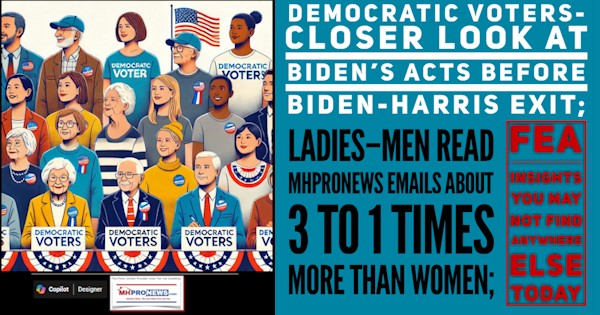






10) As Republicans are poised to control both houses of Congress, albeit by thin margins, and control the White House and in theory the federal bureaucracy, the question for the next two years will be how they will perform at delivering on issues that matter to voters.
Similarly, MHI should make advocacy for using mainstream manufactured housing a centerpiece for fighting homelessness by applying the 2000 Reform Law’s enhanced preemption provision.
Representative Lisa McClain GOES OFF on the Biden/Harris Administration who spent $66 Billion on illegal immigrants & only 3 Billion on Homeless Vets 💥🎯🔥🔥🔥 pic.twitter.com/wQdMWOXrXr
— ꪻꫝể ꪻꫝể (@TheThe1776) November 12, 2024
This will be remembered as the year California’s comeback began.
Homeless encampments are being removed thanks to our Supreme Court win; criminals are going to jail thanks to Prop. 36; Newsom is as irrelevant as ever; and Kamala failed to nationalize the California “model.”
— Kevin Kiley (@KevinKileyCA) December 26, 2024
REPORT: United States homelessness surges over 18% in 2024 according to federal officials.
Biden’s legacy.
The U.S. Department of Housing and Urban Development says that 770,000 people are homeless under President Biden.
The surge comes after 2023 also saw a massive increase… pic.twitter.com/b2ws74tAEA
— Collin Rugg (@CollinRugg) December 27, 2024
Gavin Newsom 2023: Here is my new $15 BILLION plan to solve homelessness, with Accountability at the core
Audit: Hey, somehow there’s actually $24 BILLION missing from your homeless plan, Gavin
Gavin Newsom 2024: I’m vetoing this bill that audits my spending on homelessness pic.twitter.com/lWHELk1EGj
— BAY AREA STATE OF MIND (@YayAreaNews) November 16, 2024
Oakland has fallen. pic.twitter.com/X3jmkJRghP
— Gunther Eagleman™ (@GuntherEagleman) December 28, 2024
11) The picture ought to be increasingly clear for regular or even weekly readers of MHProNews. Yes, governmental failures are part of the problem for a lack of affordable housing. But so too are the special interests, corporate and certain trade groups like MHI, for failing to do all that is legally possible to advance the free-market solution that Congress made federal law 24 years ago.



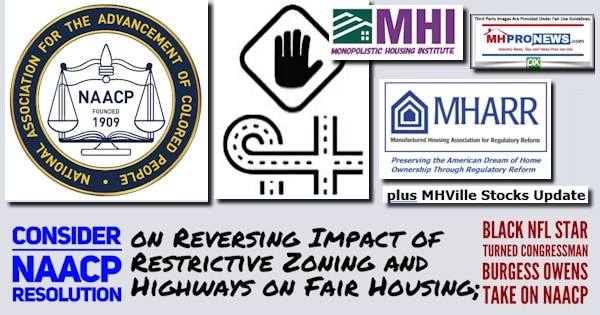
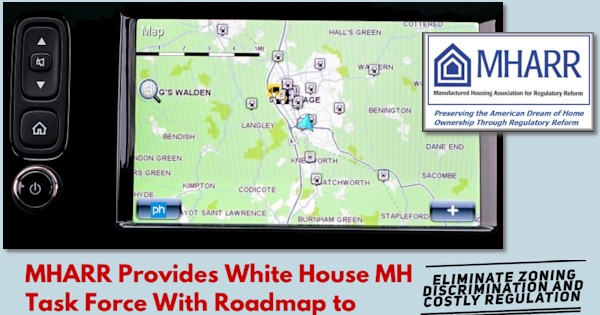


12) MHI has postured for years on getting the 2000 Reform Act’s provisions fully and properly enforced without taking the most obvious step, which was to use the legal system to get the law enforced when it became clear that HUD wasn’t doing its job.
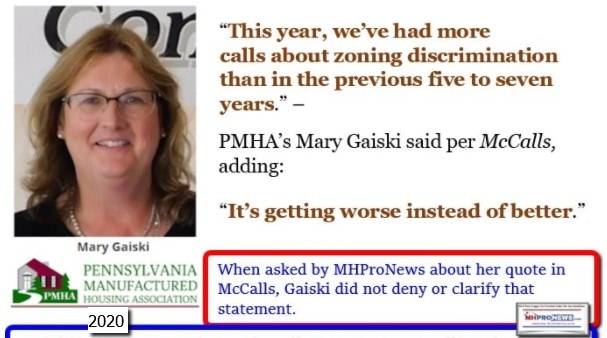
![DuncanBatesPhotoLegacyHousingLogoQuoteZoningBarriersLookBiggestHeadwindIinThisEntireIndustryIsWhereToPut[HUDCodeManufactured]HomesMHProNews](http://www.manufacturedhomepronews.com/wp-content/uploads/2023/11/DuncanBatesPhotoLegacyHousingLogoQuoteZoningBarriersLookBiggestHeadwindIinThisEntireIndustryIsWhereToPutHUDCodeManufacturedHomesMHProNews.jpg)



https://www.manufacturedhomepronews.com/ghorbani-nails-zoning-answers-to-how-and-who/

Affordable housing pros should be “mad as hell” over the ways that the system has been sabotaged for the sake of the few.


13) MHI has been openly ‘sleeping with the proverbial enemy’ for years. It is easier to understand why site-built focused trade groups would work to limit manufactured housing (see above). But it is outrageous that MHI would be working with them when they are failing to advance the cause of more affordable mainstream manufactured homes in the marketplace. Without more manufactured homes, the problems of affordable housing can’t be solved. The math and decades of experience has proven that the status quo just doesn’t work for subsidy programs and homelessness programs to end the affordable housing crisis.


14) In less than 10 minutes the article linked below reveals the math behind the mayhem of homelessness and cash strapped citizens who want a place to live but can’t afford the spiraling costs.


15) MHI member Frank Rolfe had a point, which is why MHProNews highlighted his remarks on how “special interests” don’t want to solve the affordable housing crisis. Rolfe also said he blames MHI for the low level of manufactured home sales.

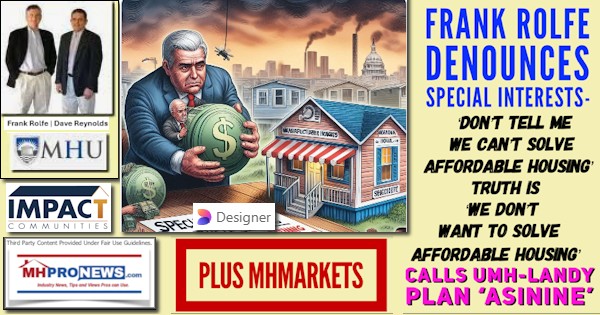

16) Trump 2.0 will have a chance to deal with this in a way that Trump 1.0, perhaps in fairness, was limited to by the various forces arrayed against it. But after 4 years of Kamala and Joe making promises without delivering on them to their own voting base, it will now be Trump’s turn to make good. “Promises Made, Promises Kept.”

17) The solution to affordable housing is simple. Enforce existing laws, even if special interests try to derail that process. Enforcing the 2000 Reform Law, the Duty to Serve, FHA Title I, and so on would save taxpayers untold billions of dollars on programs that haven’t worked in 50 years. MHProNews will monitor and report as deemed warranted.







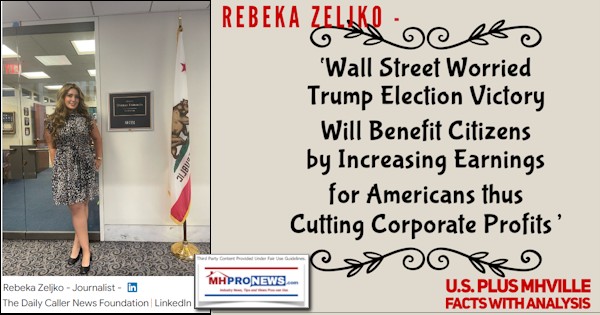



Again, our thanks to free email subscribers and all readers like you, as well as our tipsters/sources, sponsors and God for making and keeping us the runaway number one source for authentic “News through the lens of manufactured homes and factory-built housing” © where “We Provide, You Decide.” © ## (Affordable housing, manufactured homes, reports, fact-checks, analysis, and commentary. Third-party images or content are provided under fair use guidelines for media.) See Related Reports, further below. Text/image boxes often are hot-linked to other reports that can be access by clicking on them.)

By L.A. “Tony” Kovach – for MHProNews.com.
Tony earned a journalism scholarship and earned numerous awards in history and in manufactured housing.
For example, he earned the prestigious Lottinville Award in history from the University of Oklahoma, where he studied history and business management. He’s a managing member and co-founder of LifeStyle Factory Homes, LLC, the parent company to MHProNews, and MHLivingNews.com.
This article reflects the LLC’s and/or the writer’s position and may or may not reflect the views of sponsors or supporters.
Connect on LinkedIn: http://www.linkedin.com/in/latonykovach
Related References:
The text/image boxes below are linked to other reports, which can be accessed by clicking on them.’


